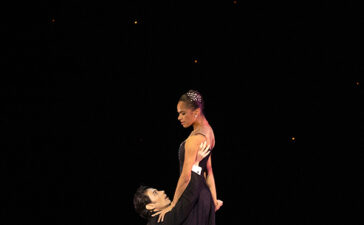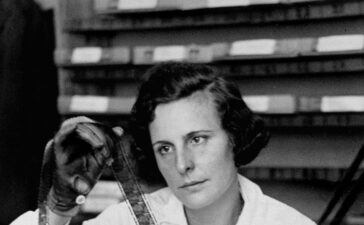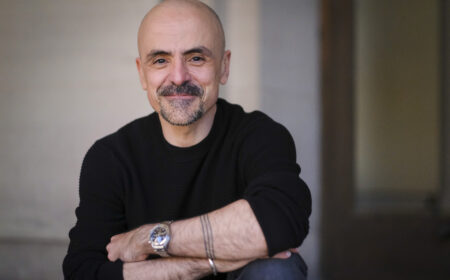
(🇩🇪 🇬🇧)
von Mihaela VIERU
Er war ein Mann, der in Bewegung dachte. Ein Tänzer, der das Gleichgewicht zwischen Tradition und Erneuerung verstand, ohne je laut zu werden. Mit Patrice Bart ist am 6. Oktober 2025 eine der großen prägenden Figuren des französischen Balletts von der Bühne abgetreten – endgültig. Die Pariser Oper, sein künstlerisches Zuhause über mehr als fünf Jahrzehnte, verkündete seinen Tod und widmete ihm die Vorstellung von „Giselle“ – jenem Werk, das wie kaum ein anderes mit seiner Handschrift verbunden bleibt.
Geboren 1945, trat Bart bereits als Kind in die Ballettschule der Opéra national de Paris ein. Er gehörte jener Generation an, die im Schatten der großen Étoiles reifte, um selbst zur Institution zu werden. 1969 ernannte man ihn zum Premier Danseur, 1972 zum Danseur Étoile – eine Karriere, die beinahe geräuschlos verlief, getragen von Disziplin, Intelligenz und einem tiefen Sinn für Stil. Patrice Bart war nie der blendende Virtuose, der das Publikum mit technischen Wagnissen verführte. Er war der Diener der Form, der Hüter des Ausdrucks, ein Tänzer von Noblesse und Nachdenklichkeit.
Nach dem Ende seiner aktiven Laufbahn blieb er, wo er hingehörte: an der Pariser Oper. Als Maître de ballet und später als „Maître de ballet associé à la direction de la danse“ prägte er Generationen von Tänzerinnen und Tänzern, führte Klassiker in sorgfältiger Erneuerung auf die Bühne zurück und ließ neue, eigenständige Lesarten entstehen. Seine Fassung von „La Bayadère“, seine poetisch disziplinierte „Giselle“, seine Interpretation von „La Sylphide“ – sie alle sprechen von einer Kunst, die das Gedächtnis der Bewegung ehrt, ohne sie zu konservieren.

Patrice Bart war ein Mann der Kontinuität. Kein Revolutionär, kein Rebell – und doch von stiller Radikalität, weil er das Handwerk bewahrte. Sein Blick galt der Struktur, dem Atem der Musik, dem Fluss der Linie. Unter seiner Leitung wurde das Corps de ballet zu einem Instrument reiner Klarheit, in dem jeder Schritt Bedeutung trug.
Seine Ästhetik, oft als klassizistisch bezeichnet, war ein Plädoyer für Wahrhaftigkeit. Bart glaubte an die Wahrheit im Tanz – nicht an Effekte, nicht an Pathos. Er vertraute auf Haltung. Vielleicht war das sein größtes Vermächtnis in einer Zeit, in der sich alles beschleunigt: die Geduld des Maßes.
Der Abschied von Patrice Bart ist mehr als der Verlust eines Choreografen. Es ist das Ende einer Ära, in der das klassische Ballett noch eine Schule des Geistes war. Wer mit ihm arbeitete, erinnert sich an seine Präzision, an den feinen Humor, an die stille Autorität eines Menschen, der keine Bühne brauchte, um präsent zu sein.
Die ihm gewidmete Vorstellung von „Giselle“ war nicht nur eine Geste des Respekts, sondern ein Echo seines Lebenswerks. Ein Tanz zwischen Erinnerung und Ewigkeit – so, wie Patrice Bart selbst das Ballett verstand.


Patrice Bart – A Life Devoted to the Stage
He was a man who thought in movement. A dancer who understood the fragile balance between tradition and renewal — and who never needed to raise his voice to be heard. With the passing of Patrice Bart in October 2025, the world of ballet has lost one of its quiet masters, a figure whose artistry shaped the very identity of the Paris Opera Ballet for more than half a century.
The Opéra national de Paris, his artistic home since childhood, announced his death and dedicated that evening’s performance of Giselle to his memory — a gesture as fitting as it was poignant, for Giselle remained the ballet most closely bound to his name and sensibility.
Born in 1945, Bart entered the Paris Opera Ballet School as a boy. He rose steadily through its ranks, becoming Premier Danseur in 1969 and Danseur Étoile three years later. His career unfolded without noise or vanity — marked instead by integrity, intelligence, and an unerring sense of style. Patrice Bart was never the dazzling virtuoso who sought to impress; he was the custodian of form, a dancer of restraint and reflection, a man of noble presence and quiet conviction.

After retiring from the stage, he remained where he truly belonged — at the heart of the Opera. As Maître de ballet, and later as Maître de ballet associé à la direction de la danse, he trained generations of dancers and reimagined the great 19th-century ballets with meticulous care. His productions of La Bayadère, La Sylphide, and especially Giselle revealed a choreographer of poetic precision, faithful to tradition yet alert to the breath of modernity.
Bart’s art was one of continuity. He was no revolutionary, yet in his devotion to craft there was a kind of quiet radicalism. His eye was attuned to structure, to the rhythm of music, to the invisible architecture of a line in motion. Under his direction, the corps de ballet became an instrument of order and clarity, every gesture charged with meaning.
© Patrice Bart 2016 bei der Wiederaufnahme von „La Bayadère“ im Ballettprobensaal des Bayerischen Staatsballetts, Foto von Silvano Ballone
To describe his aesthetic as “classical” is only part of the truth. What he truly pursued was authenticity — a belief that dance must be honest before it can be beautiful. In an age of spectacle, Patrice Bart stood for measure, grace, and discipline.
His passing marks more than the end of a career; it signals the fading of an era in which ballet was still a school of spirit. Those who worked with him remember the precision of his eye, the lightness of his humour, and the authority that never needed to assert itself.
The Giselle dedicated to him at the Palais Garnier was not merely a tribute — it was an echo of his life’s work: a dance between memory and eternity, as if he himself were still shaping the silence between two movements.









